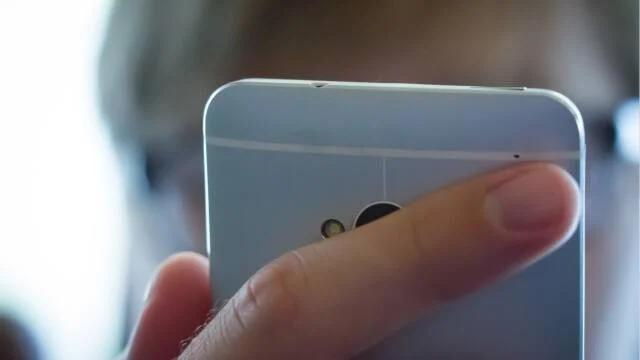Continuing from "Why You Need To Be Using mHealth Part 1" ...
Consider first the growing pervasiveness of health apps, wearables, and connected devices in the US and worldwide. 58% of American smartphone users have downloaded a mobile health app according the an NYC Langone Medical Center Survey.
The market for fitness trackers literally doubled from 2014 to 2015 - according to market research group NDP.
Even the higher-end category of smartwatches (lead by the Apple Watch) is experiencing rapid growth, with Gartner research projecting 48% growth from 2015 to 2017.
All this is to say, if you haven’t been at bare minimum fielding questions about health apps and wearables from your clientele or patient population, you will be soon. Are you ready for it?
Popularity Does Not Equal Impact
It is wonderful news that consumers are flocking to health and fitness devices at the astounding rates outlined above, but that isn’t the whole story. Only just over half of smartphone owners who download fitness apps continue using them for a meaningful amount of time.
Even more interesting, 42% have downloaded 5 or more health or fitness apps to their smartphone. This seems like strange behavior doesn’t it. 50% drop off completely and 42% download 5 or more fitness apps? What the heck is that about?
Having been in the thick of the mhealth market for several years now, I have a hypothesis that I believe accounts for both of these stats. People want to use fitness apps and wearables to live healthier … but they have no idea what to do with the data once they’ve started tracking it.
Those who keep seeking new apps to try (the 42% of the group who downloaded 5 or more) are hoping to find the one app that helps them turn health tracking into actual lifestyle change.
And the 50% of smartphone owners who dropped off completely? Same problem - the mobile app they tried wasn’t valuable because they didn’t know how to use the data to get results. This group was just less intrinsically motivated to try 5 or more options.
This is the core problem - the one thing holding mhealth back from having a greater impact on outcomes. Consumers are left alone to try and make use of their health data, and they lack the knowledge and motivation to achieve the desired results.
Just imagine what would happen if more of the consumers who lack this expertise had a health professional on the other end of their data to help them redirect their efforts and reach their goals. Better yet, let’s take a look at a few real life examples of what happens when health professionals have access to mobile health data.
A Range of Interventions Enabled By mHealth
Sometimes health interventions entail targeting a simple habit that leads to lasting lifestyle change, sometimes interventions entail emergency surgery. Both can have a significant, long-term impact on health. The following are three brief examples of ways mhealth has been used by practitioners in real life situations to impact someone’s life for the better.
Health Coach Megan Lyons of The Lyons’ Share Wellness was working with a client focused on weight loss who was starting to plateau.
I have a client who was steadily losing weight and has stalled in the past several weeks (due to that 'reaching a goal' mentality … he lost motivation to reach the NEXT goal because we celebrated the first goal maybe a bit too much! He also had an injury, etc.). I wrote to him [the following] ...
“Just looked at a trend ... when you’re losing [weight], you’re averaging 7 servings of veggies. When you’re maintaining, you’re averaging 4-5. Let’s up them! :)”
It worked! The very next day he had 7 servings of veggies, and has only dipped below that once since then (with 6 servings).
Her client continues to make great progress and they have mobile health data (specifically Megan’s professional advice based on that data) to thank.
Dr. Steve Feyrer-Melk is a Lifestyle Medicine expert and co-founder of the Optimal Heart Attack and Stroke Prevention Center, a Concierge Cardiology Practice in Scottsdale, AZ.
After watching Jack’s physical activity consistently increase for a couple of months, I noticed one week that his activity data was dropping dramatically.
This sudden change was a flashing red light to me so I decided to send Jack a brief message through the Nudge Platform to see how he was doing.
“Hey Jack, I noticed your Fitbit data really dropped. Is everything okay? Let me know how it’s going.”
Jack responded within minutes and let me know that he had been feeling ill the past few days and he wasn't getting any better. He was starting to worry. I got on the phone with Jack immediately, discussed his symptoms, and was able to help him set an appointment with the right doctor for the next day.
About a week later Jack sent me the following note:
“Dr. Steve, thanks again for your helping me last week. It is awesome to know that I have someone looking out for me. This technology is awesome...and you have a patient for life!”
And finally, to venture beyond the realm of wellness care, this is the remarkable story of how a 42-year old emergency room patient’s Fitbit data was used by doctors to determine how they should go about treating him when he came in after a seizure and experiencing atrial fibrillation.
“Because the patient was asymptomatic during his current atrial fibrillation event, it was not possible to assign an onset time for his arrhythmia. During the patient’s examination, it was noted that he was wearing a wrist activity tracker (Fitbit Charge HR, Fitbit, San Francisco, CA), which was synchronized with an application on the patient’s smartphone, recording his pulse rate as part of a fitness program. The application was accessed on the patient’s smartphone and revealed a baseline pulse rate between 70 and 80 beats/min, with an immediate persistent increase to a range of 140 to 160 bpm at the approximate time of the patient’s seizure ... Once the patient’s onset time for his atrial fibrillation was established as three hours before ED presentation, he was considered a candidate for rhythm conversion.”
The procedure was a success in part because of the use of mobile health data. The doctors chose to publish this case study because they believed their use of Fitbit data in emergency response is relevant for many other care scenarios.
The Statistics Point to a Simple Conclusion
These stories detail a range of mhealth application, all the way from simple behavior change to, to ongoing wellness care, to deciding a course of treatment in an emergency room. If not for mobile health finding the capable hands of the right professional, none of the positive results would have likely been possible.
So why do I think health practitioners need to get serious about gaining access to mhealth data? It’s not just the three cases I outlined above.
It's not because over 58% of smartphone owners have downloaded a health app. Or even because fitness tracker sales more than DOUBLED just last year.
It's because in a recent survey nearly 90% of patients say they want to partner with caregivers to live healthier lives.
It's because 84% of those patients say they believe self-monitoring apps and devices can boost health management efforts, and 81% of them say are likely to use a mHealth device when recommended by a provider.
It’s because a pattern is emerging here, and it points toward putting mobile health into the hands of great health practitioners who can use it to change lives for the better.







